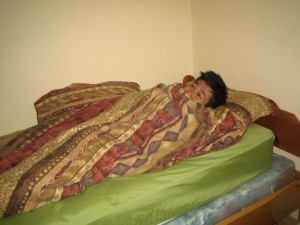Pressure ulcers or bedsores are areas in which the skin and tissues are damaged due to prolonged pressure, sheering conditions and even friction. Bed-ridden individuals and those who are paralyzed face a higher risk for developing pressure ulcers. It is important to note that pressure ulcers are categorized in four groups based on the severity of the condition. There are common locations in the body in which pressure ulcers are likely to develop.
Hips and buttocks
Always bear in mind that the buttocks and tailbone are at high risk for pressure ulcers especially among those who are bound to their wheelchairs. The loss of sensation below the level of the waist among paralyzed individuals or those with certain conditions leads to the loss of sensation to the pain linked with the need to change positions. Those who are bound to wheelchairs might also lack the capability to change positions in order to relieve the pressure on the sacrum and buttocks.
It is important to shift position every 15 minutes in order to minimize the risk of developing pressure ulcers. Individuals who are bed-ridden can suffer from pressure ulcers on the sides of the hips as well as the tailbone.

Legs, heel and ankle
Individuals who are bound to wheelchairs are likely to develop pressure ulcers in which the legs rest on the lower part of the wheelchair. If the legs are not moved for extended periods while using a wheelchair, it increases the risk for developing pressure ulcers on the legs. Those who are bed-ridden can also develop bedsores on the lower extremities.
The areas at high risk for developing pressure ulcers include the sides of the knees, ankles and heels due to the bony protrusions on the bed. Those who have diminished mobility or individuals in a coma will develop ulcers on the ankles, knees, heels due to the friction as well as sheer from the sliding that occurs in the bed when changing positions.
Head and ears
Individuals who are confined to bed can develop pressure ulcers on the head. The usual locations for these pressure ulcers include the back part of the neck as well as the side of the head. Even the rims of the ears can also develop pressure ulcers.
Preventing pressure ulcers
Pressure ulcers can be prevented but wounds can still develop even with appropriate care. Always remember that changing position is the key in order to prevent pressure ulcers. The positioning must be frequent but it is vital to avoid stress on the skin as well as minimizing pressure on vulnerable sites. Other measures include proper skin care, good nutrition, and regular exercise and stop smoking among those who smoke.
If a wheelchair is being used, the first aid care involves shifting the weight of the individual frequently. In case the individual has enough upper body strength, he/she can lift his/her body off the seat by pushing on the arms of the chair. Additionally, you can also provide a cushion to relieve the pressure.
When the individual is bed-ridden, he/she must be repositioned regularly every 2 hours. You can also apply a specialized type of mattress that can help with the positioning, relieving the pressure as well as protecting the vulnerable parts of the body.
